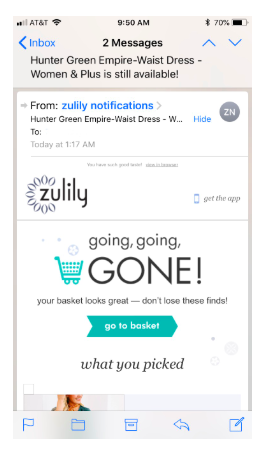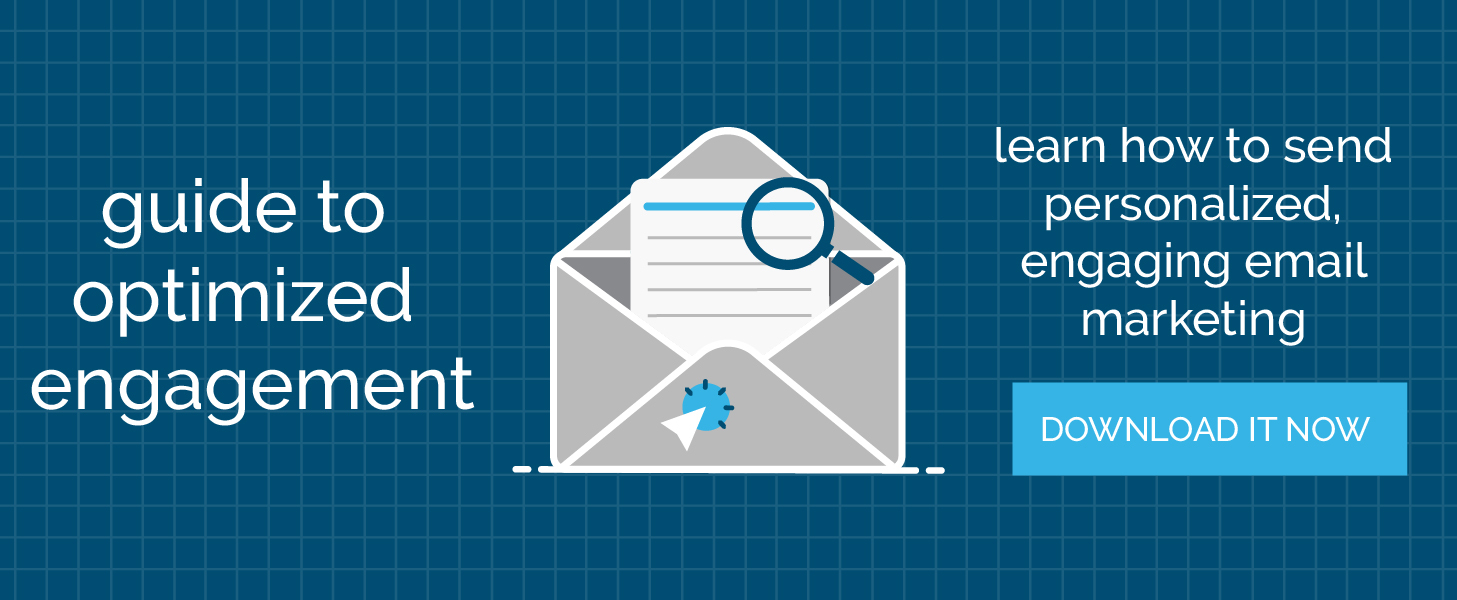1. Subject lines
Sixty-nine percent of email recipients report email as spam based solely off the subject line. If your subject lines aren’t doing their job, you can forget about getting opens.A successful email campaign starts with a subject line that grabs the attention of your contacts. It’s important to be sure you’re starting out with the best subject line possible.
Test, test, test. Test keywords, phrases, tone, emojis and more to see what your audience prefers. Once you find what works, make it your go-to type of subject line, but continue to test to gain more insight on what works and what doesn’t. You may find your audience responds to different types of subject lines at different times of the year.
Be descriptive and communicate the benefits of your promotion, product or service clearly and prominently. Seasonal slogans such as, “Fall into savings” or “Sizzling summer savings” are popular. Those are fine to use from time to time, but more often than not, you should try to communicate the benefits of your promotions, products or services. And call attention to specific details.
Count characters. Subject lines of 61 to 70 characters had a 17 percent average read rate — the highest of any length. However, for subscribers reading your campaigns on mobile devices, shorter is better.
Personalization can help your emails stand out in the inbox. Personalized emails get 29 percent higher unique open rates and 41 percent higher click-through rates. Start using information you have about your contacts in order to capture their attention.
Personalization can help your emails stand out in the inbox. Personalized emails get 29 percent higher unique open rates and 41 percent higher click-through rates. Start using information you have about your contacts in order to capture their attention.
Personalization comes in many forms, some as simple as first name or location, and some are a little more complicated using past purchase or browser behavior. It may take some extra work to set up the ability to capture these data points and push them into your emails, but the payoff is worth it. Whatever you have the capability to incorporate into your campaigns, begin to do so.
This email from Zulily is a good example of personalization that’s going beyond the basic first name. As you can see, the brand is populating the product that I left in my cart as part of the subject line. This stands out to me in my inbox because it’s a product I was recently interested in and the callout of it in the subject line makes the email more personal to my recent activity.
2. Hashtags
The subject line sets the tone for the rest of the email and many times it’s the deciding factor as to whether or not your email campaign gets opened, ignored or deleted. We as email marketers know the importance of the subject line, but how do we stand out in a crowded inbox?One idea is to test adding relevant hashtags to your subject lines. Including a hashtag in the subject line can capture a reader’s attention and encourage opens.
The use of hashtags in subject lines won’t be a fit for every brand, but for those that it is a fit for (and who are active on social media), this is something that should be tested. Additionally, it’s important to think strategically about your hashtag — understand your audience and what will appeal to them.
By including a hashtag in the subject line, you can streamline your email campaign, taking your reader from their inbox to your brand’s social account. It can also serve to generate positive exposure about your company’s product/service offerings.
By including a hashtag in the subject line, you can streamline your email campaign, taking your reader from their inbox to your brand’s social account. It can also serve to generate positive exposure about your company’s product/service offerings.
3. Make it Personal
The importance of personalizing emails cannot be emphasized enough. In spite of that, there are so many brands that follow the blanket email communication approach which is indeed not recommended in today’s day and age when customers want to feel valued and heard.Personalizing emails does not end with just referring to them by their name. There are a lot of other ways to personalize your email marketing approach such as sending them personalized offers and product recommendations basis their purchase history, sending birthday offers and even shooting them abandoned cart reminder emails.
4. Easily Readable
The body of your email needs to be easy on the eyes. Avoid cluttering it with multiple messages because you will just end up confusing the customer and attain nothing out of it.Whether it’s creating awareness about your new campaign or announcing the annual sale – stick to one objective and center your message around it. Use enticing imagery, break the text down into shorter paragraphs, highlight call-to-actions properly and use bullet points to improve readability.
Most importantly, as most people access emails on their phone, ensure
your email template is optimized for mobile. Nothing is more frustrating
than having customers struggle to make sense of your email on their
phones.
5. Interactive emails
Interactive emails contain an element subscribers can engage with. Examples of interactivity in emails include:- Animation in the form of a GIF
- Video within the email
- Social content pulled into the email
- Quizzes and surveys that begin in the email
Interactive emails — when used well — can increase email engagement and click-through rates.
6. Scannability
With so much competition in the inbox, you only have a few seconds to capture your subscriber’s attention before he or she is on to the next thing in the inbox.Email marketers need to try new ideas to increase engagement, as well as to ensure they’re designing emails with best practices in mind. Creating emails designed for scannability is a must. By doing this, you’re enabling your subscribers to digest all the important information they need quickly.
To make your emails more scannable:
- Use descriptive and/or interesting headlines to quickly summarize your point
- Write in short paragraphs and sentences
- Or better yet, use bullet points
- Employ white space to separate chunks of text
7. User generated content
Research says content with relevant images receives 94 percent more views than content without relevant images.Incorporating user generated content into your emails can accomplish the following:
- Tell stories to which your customers can relate
- Feature loyal customers’ opinions on products/services in email campaigns
- Keep emails relevant and timely with real world/life imagery, feedback and conversations
Every marketer knows consumers trust online reviews. Adding a story element into your email marketing helps consumers trust your product even more. But be sure you’re telling a story that resonates with your target audience.
Another method is to feature loyal customer opinions about your product/service in emails. This shows you appreciate their feedback and in turn, they’ll appreciate your brand. They’ll feel excited about contributing — a feeling that will connect them to your brand even more.
Pulling user generated content into your email marketing via a social feed is a popular approach and a way to make an email more exciting. This Carnival email does just that.



No comments:
Post a Comment